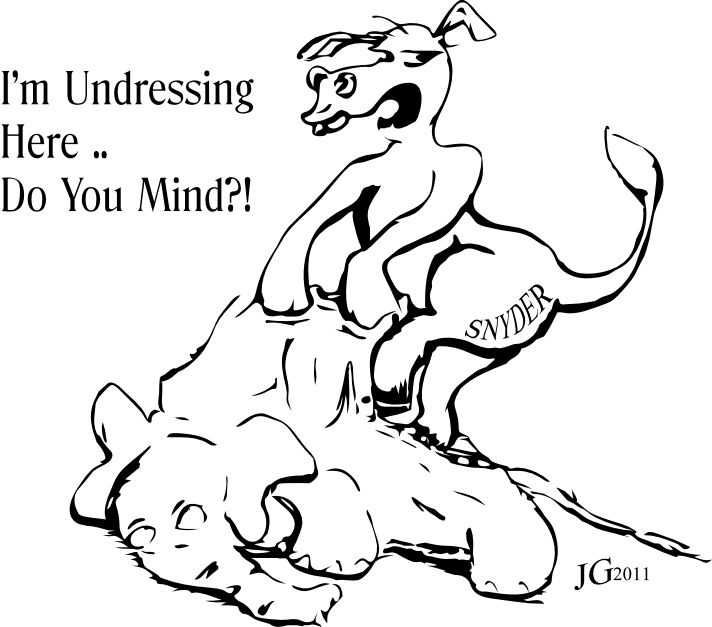
 |
NAVIGATION
|
NEWS TIPS!RightMichigan.com

Who are the NERD fund donors Mr Snyder?Tweets about "#RightMi, -YoungLibertyMI, -dennislennox,"

 |
Enough With The Circular Firing Squad Already!By Kevin Rex Heine, Section News
It's been said often enough, and I believe it to be true, that in any given partisan election campaign, the real choice is frequently in the primaries. Once the general campaign is joined, we're stuck with whoever survives the primary campaign, like that or not. After the primary election results are certified to be so, our job at that point is to rally behind the nominee and do what we can to get them across the finish line in November; or, if our consciences cannot support that, then to at least do no harm. (Yes, there are exceptions, such as Roy Schmidt) but this is the general rule.
In Michigan's case, we have a Junior Senator who needs to be unseated, and we are one of the eleven "battleground" states in the contest to unseat the President (the others being: CO, FL, IA, NC, NH, NV, OH, PA, VA, & WI). Yet, judging by some of the posts and comments on this site and elsewhere in the week since the August primary, we seem to be more interested in undermining our own nominees than we do in taking down the incumbents. That's gotta stop.

"Disagree and Commit" is a philosophy used in many successful organizations across the spectrum of industries, sports, and non-profits. The point of the philosophy is that there will naturally be disagreement when it comes to strategy, implementation, or even political nominations. By giving all of the involved parties a fair chance to put their arguments out on the table and honestly hash out their differences (however vigorously may be necessary) and expose reality to public view, it's much easier to obtain buy-in and commitment to moving forward with the ultimate decision (or, in this case, the nominee). Conversely, "pretending to agree" by remaining silent about one's concerns, and then ultimately failing to implement the decision (or support the nominee), is never a good idea; worse still are those who actively or unwittingly sabotage the strategy, because they never really bought in in the first place.
Case in point is the Michigan Republican U. S. Senator Primary. From the Mackinac Conference (22 - 25 September 2011) through GOTV Weekend (03 - 06 August 2012), it can be fairly said that there was a considerable amount of "airing out" of opinion as to whom the nominee to challenge Senator Stabenow should be. Between tea party groups, tea party "umbrella groups," county parties, coalition organizations, and "kingmakers" of every stripe there was all kinds of input as to whom we ought to be voting for and why, or as to whom we shouldn't vote for and why. In the final analysis, when the ballots were counted, Pete Hoekstra had received 52.06% of the 765,681 total ballots cast on the Republican side of the senate primary. (The second-place finisher, Clark Durant, received 32.22% of the ballots cast.) And so, like the matter or not, Pete Hoekstra is now the Republican nominee to challenge Debbie Stabenow for Michigan's Class 1 Seat in the United States Senate. Yet in the days immediately following the primary, there were several articles and comments on this site (and they're still circulating on various tea party comment threads and discussion boards) questioning whether or not Hoekstra has what it takes to beat Stabenow. Some question the "fire in his belly," and many are still regurgitating the meme that there isn't any difference between the two. I think that perhaps the perception that Pete doesn't have the necessary gumption may be more reflective of post-election exhaustion, as in how burned-out most of us are the day or two immediately following the climax of a year of hard work, but I think that the other fallacy requires a bit more attention. The "overlap" between Pete Hoekstra's time in Congress and Debbie Stabenow's combined time in both chambers of Congress is from January 3rd, 1997, to January 3rd, 2011, fourteen years in toto. The "tree within the forest" that formed the basis of the primary attacks against Hoekstra, principally by claiming that he's no different than Stabenow, focuses on, in my estimation, no more than one percent of the total votes cast and policy positions taken during that fourteen year period. Now, I am by no means saying that those challenges aren't valid (I agree that there are some questions that need to be answered), but what I am saying is that, when we step back and look at the rest of the forest, there are some obvious and significant differences between the two. And I think that those differences are going to come out in the open during the general campaign. Of the 33 U. S. Senate seats up for election this year, there are there are 21 Democrats, 10 Republicans, and 2 Independents (caucusing with the Democrats) in the incumbent mix. The Republicans need a net pickup of a mere 4 seats in order to become the majority party in the upper chamber. Of the 16 seats that are considered available for pick-up (ranging between "likely flip" and "vulnerable"), 11 of those seats are occupied by Democrat incumbents. Michigan is one of those seats (though Stabenow is currently the least vulnerable of the eleven, she's still vulnerable). The point is that, strictly on the numbers, we have a net pickup of at least six seats for the good guys if we do this right. And before we get too bogged down into whether or not Pete can be trusted to "stay on the reservation" when it counts, consider this: The very first vote that will be cast by everyone who gets elected to the U. S. Senate this coming November, along with those in the other two senate classes, will be for Caucus Leader. If the Republican Party accomplishes a net pickup of the minimum four seats needed to become the majority party, then the vote that the freshmen republican senators will be casting will be for Majority Leader. The Senate Majority Leader sets the legislative and executive agenda of the Senate, has priority in obtaining recognition to speak on the floor of the Senate, and manages the day-to-day business of the Senate, so this is no trivial thing. Should the Republican Party obtain majority presence in the Senate, it is by no means guaranteed that Mitch McConnell, Senior Senator from Kentucky and current Senate Minority Leader, will be seated as the new Senate Majority Leader. See, many of these freshmen, along with a few currently in office, are much more likely to want Jim DeMint, Junior Senator from South Carolina, seated as the Majority Leader. I'm quite certain that Pete Hoekstra would be among that number. Whether Hoekstra will have the opportunity to cast that vote or not may be a matter of some debate at this point; but for what it's worth, I'd like to point out that the total "republican" turnout two Tuesdays ago was about 57.18% of the total votes cast in the primary (765,681 ÷ 1,321,501), while the total "democrat" turnout (555,820 ÷ 1,321,501) was 42.06%. Carrying this over to the presidential race provides a similar mindset. On this site, as well as on tea party forums and comment threads, true conservatives have fairly and rightly ripped Mitt Romney on his record, not to mention some of the tactics used to win some of the early primary states, with plenty of video and document evidence to back it up. In like manner, there has been some criticism leveled against his pick of Paul Ryan for the running mate nomination. However, unless there's a really unexpected surprise at the Republican National Convention later this month, Romney and Ryan are going to be the top of the republican ticket going forward into the general campaign. I know that there are some third-party activists who want us to believe that there's so little actual difference between the two major parties that we'd be better off voting for someone like:
I realize that the "two party system" is on paper a false dichotomy, because other choices do exist. But the brutal reality of the third parties, in anything further up the ticket than county sheriff, is that the political parties are much like Big Ten Conference Football was from 1968 thru 1992. Sure, there were ten teams on paper, but the way things were, it was the "big 2 and the other 8" . . . with very few exceptions.

Enough With The Circular Firing Squad Already! | 11 comments (11 topical, 0 hidden)
Enough With The Circular Firing Squad Already! | 11 comments (11 topical, 0 hidden)
|
Related Links+ Disagree and Commit+ when the ballots were counted + principall y by claiming that he's no different than Stabenow + I agree that there are some questions that need to be answered + when we step back and look at the rest of the forest + Senate Majority Leader + Also by Kevin Rex Heine |